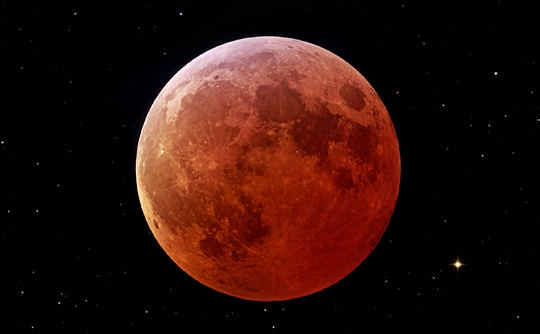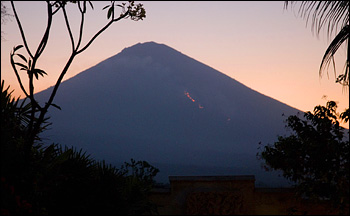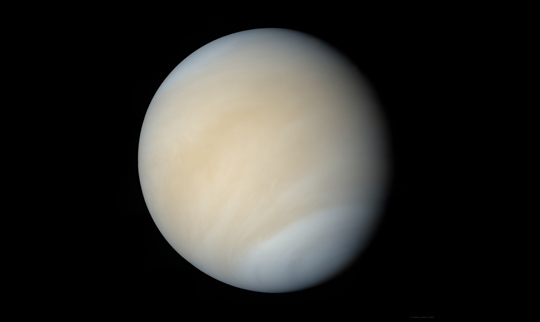

Gazing up at the patch of night sky where the moon had shone just minutes earlier, young James Hansen had a flash of insight that changed the course of his career. It was December 1963 and Hansen, a senior in college, had gathered with fellow students at a small observatory just outside of Iowa City to observe a lunar eclipse. As the moon entered Earth’s shadow, Hansen expected the lunar disk to grow dark but he didn’t expect it to completely disappear from view. At first the moon’s disappearance puzzled Hansen, but then it dawned on him that it must have something to do with the recent eruption of Mount Agung, in Indonesia. Agung Volcano erupted with such force on March 17, 1963, it injected gases and debris particles high into the atmosphere, above where rain clouds form. Over a span of weeks the volcanic particles spread around the upper atmosphere where they scattered and absorbed incoming light, slightly darkening Earth’s surface. |
|||
 | |||
“Normally you can see the moon during an eclipse from the sunlight beams refracted into Earth’s shadow,” Hansen explained, referring to the way in which the atmosphere bends light beams. “But on that night the atmosphere was so filled with volcanic aerosols that the sunlight beams that usually bent into the moon’s shadow region couldn’t penetrate Earth’s atmosphere well. So it appeared to us as a remarkably dark eclipse.” |
During a lunar eclipse the moon usually remains visible, dimly lit by sunlight refracted through Earth’s atmosphere. In December of 1963, however, particles in the atmosphere from the eruption of Mount Agung blocked enough sunlight to make the eclipsed moon almost invisible. (Photograph ©2007 Johannes Schedler.) | ||

Hansen marveled at the power of these airborne particles, known as aerosols. If aerosols can reflect and absorb incoming sunlight, what effect could events like Agung's eruption have on Earth’s surface temperature? To find out, he plugged what was known at the time about aerosols, greenhouse gases, and how Earth absorbs and radiates energy into some physics equations. His results suggested that the aerosols should slightly cool the planet. It was one thing to estimate the impact of volcanic eruptions on global temperature using math and physics. It was quite another thing to compare such estimates to real-world data. The problem was that there were no real-world, global-scale data sets of temperature in the late 1960s to which he could compare his estimates. Murray Mitchell, in the NOAA Weather Bureau’s Office of Climatology, collected the most complete data set at the time. But Mitchell’s data set only included stations in the Northern Hemisphere. Thus Hansen’s goal of comparing his estimates to the real world was put on hold. |
A catastrophic eruption of Mount Agung in March 1963 killed over 1,000 Indonesians on the island of Bali. The eruption covered the nearby area with ash and injected sulfur compounds into the stratosphere. The particles remained aloft for several years, absorbing and scattering light and slightly cooling Earth’s surface. (Photograph ©2006 Jesse Wagstaff.) | ||
 | |||
He continued working on planetary-scale science problems throughout his graduate and post-graduate studies. The United States had become a space-faring nation and the allure of the unknown called many planetary physicists’ attention to worlds beyond Earth’s atmosphere. What were conditions on the other planets like, and could they support life as we know it? Hansen wrote his doctoral thesis on the atmosphere of Earth’s nearest neighbor, Venus. Its dense carbon dioxide atmosphere made Venus’ surface hotter than an oven. Years later Hansen’s studies of Venus would contribute to his efforts to track Earth’s temperature. |
The dense carbon dioxide atmosphere of Venus shrouds the planet in a thick layer of clouds—and heats the surface to a scorching 460° C (860° F). Jim Hansen’s research on Venus’ greenhouse effect eventually led him to the study of carbon dioxide and the greenhouse effect on Earth. (Image ©2005 Mattias Malmer.) | ||